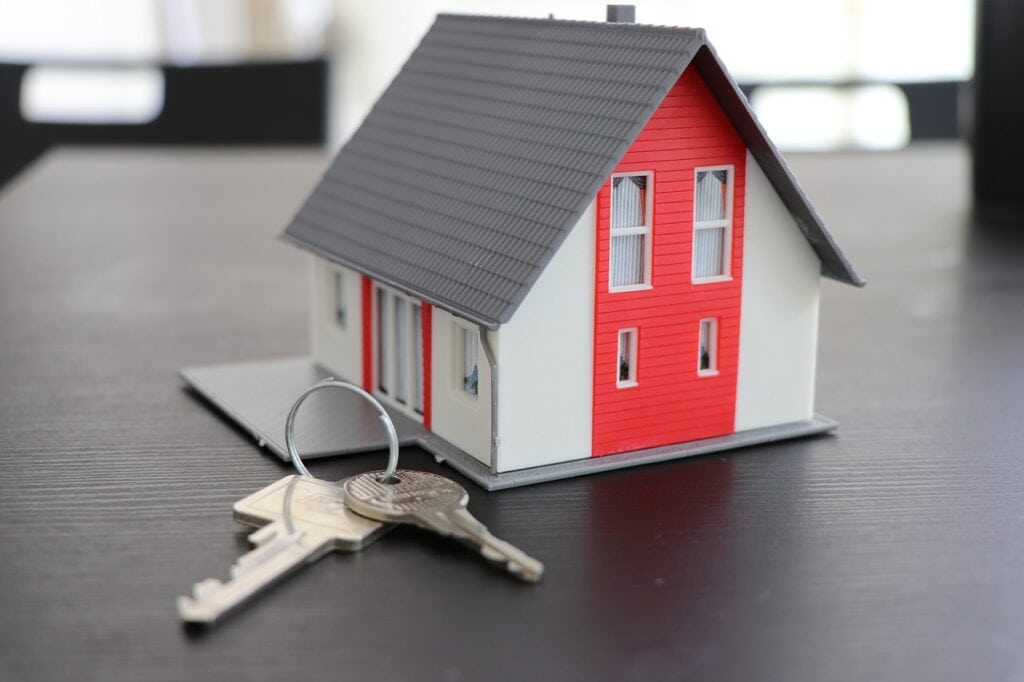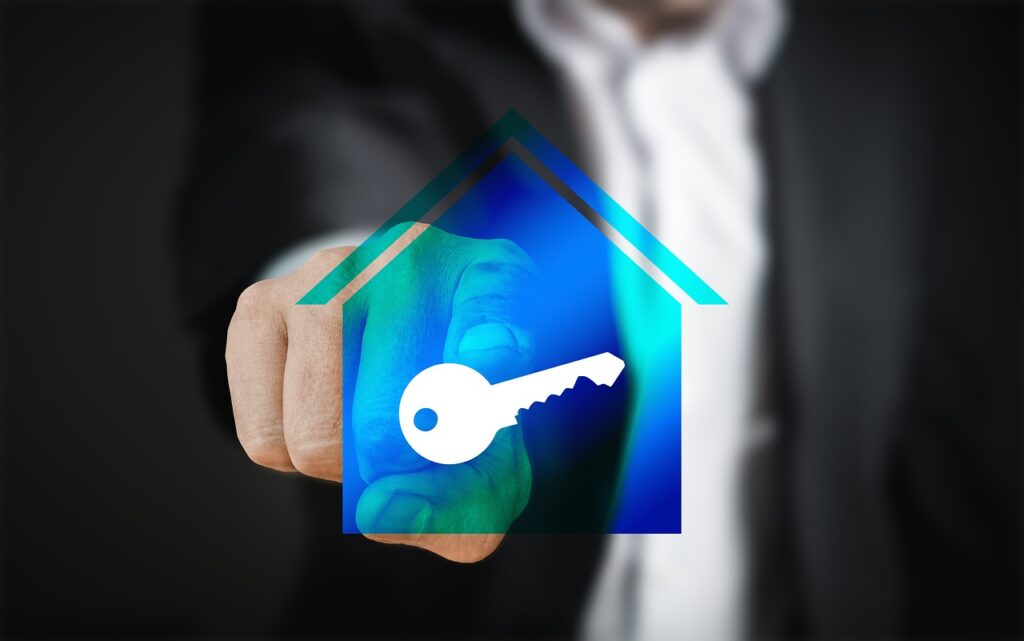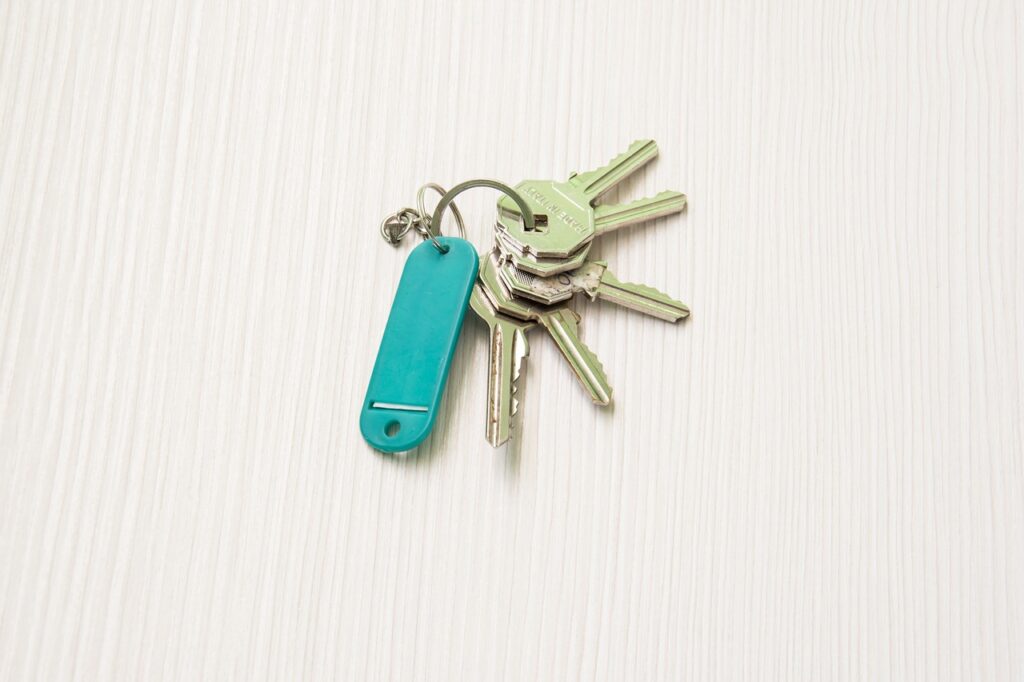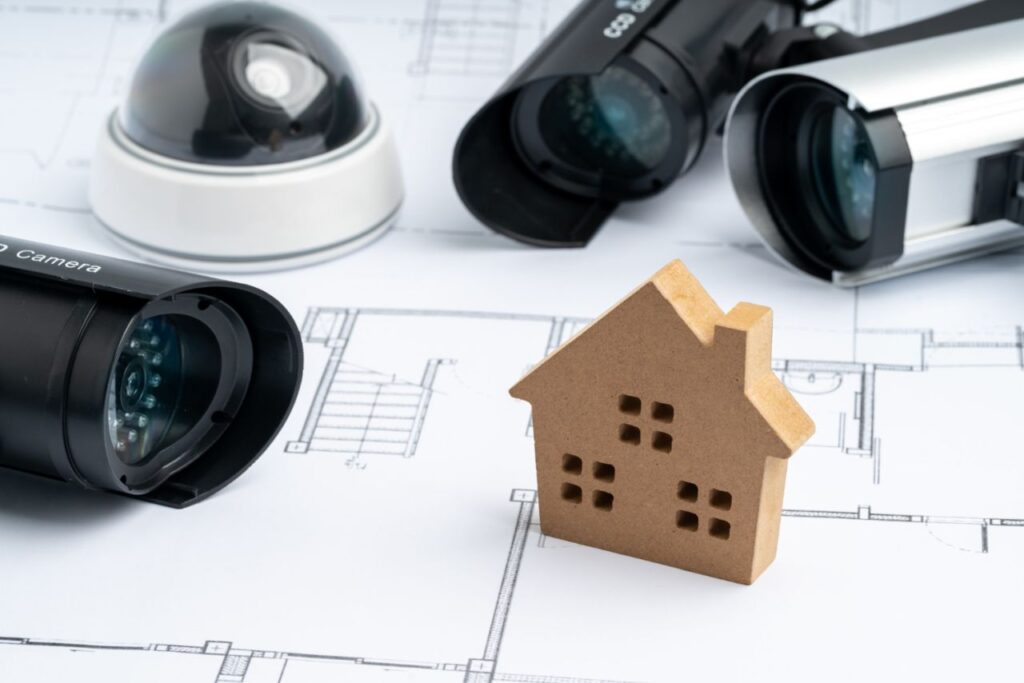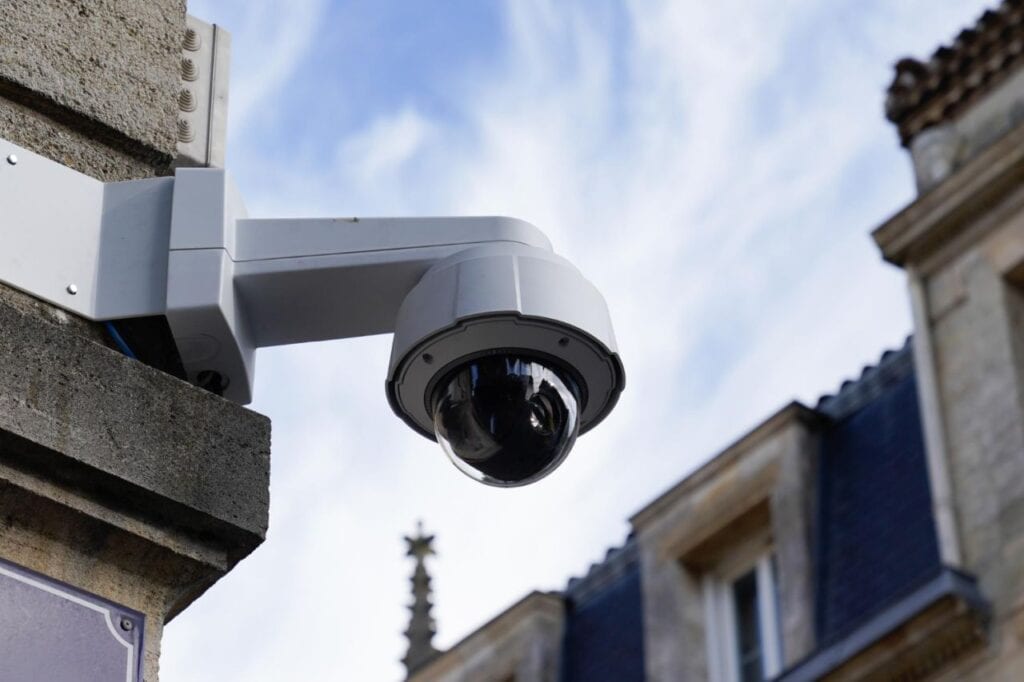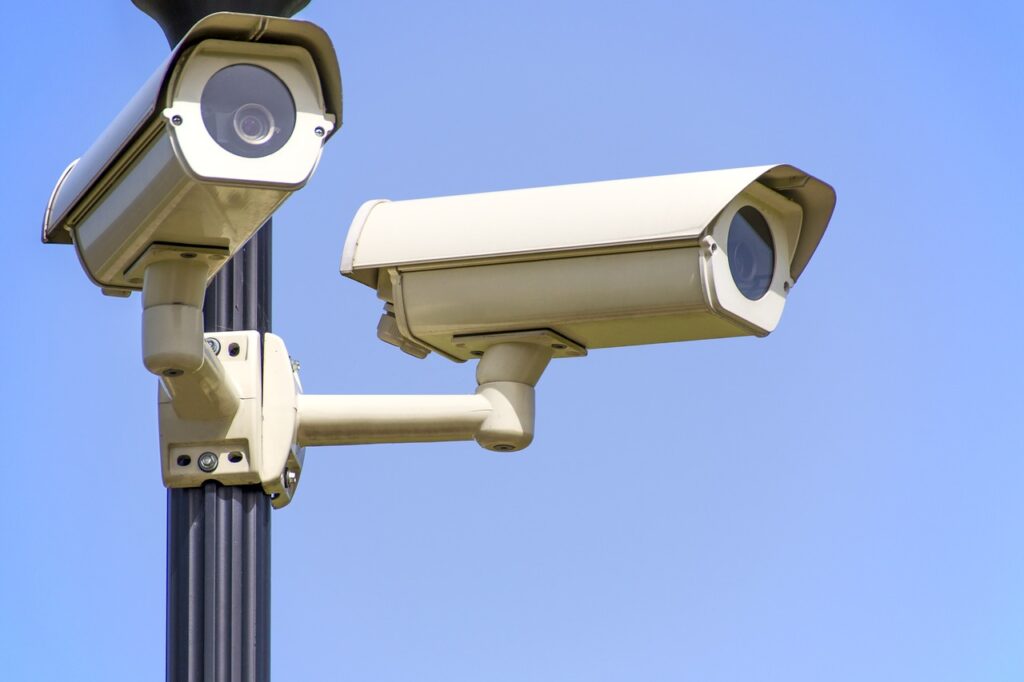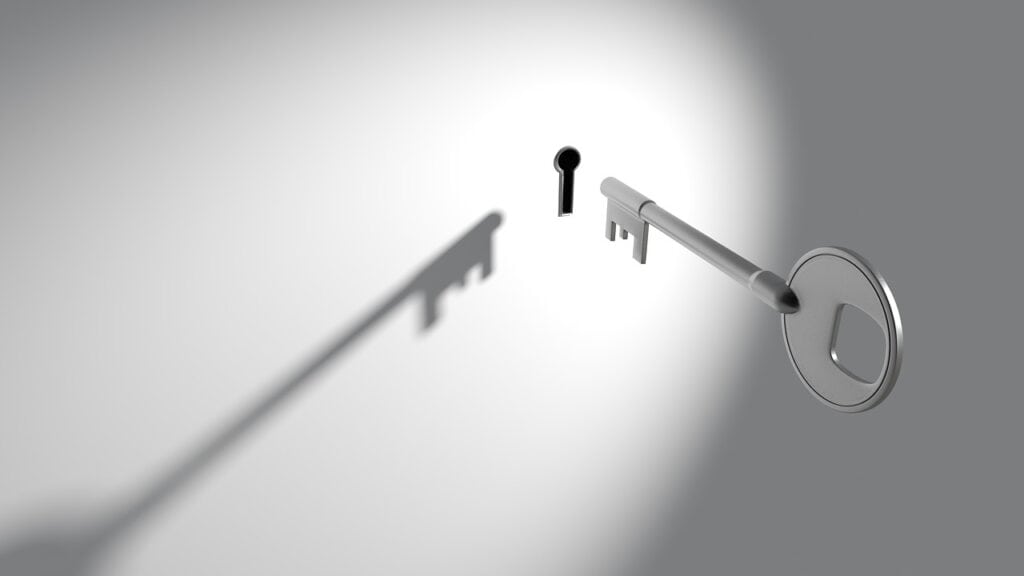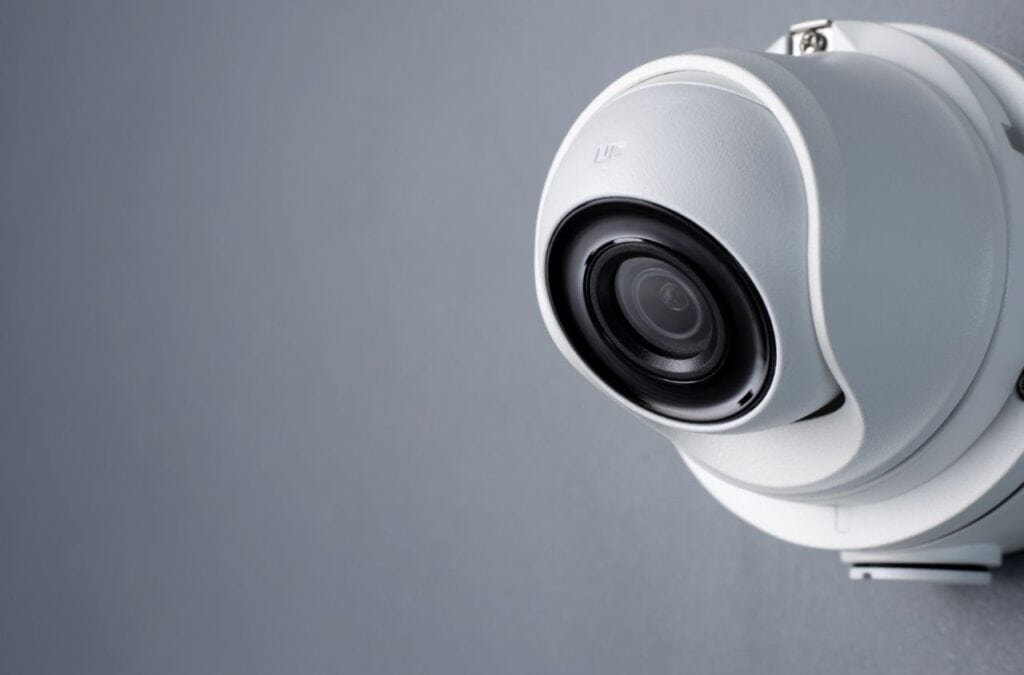A home security system consists of a variety of parts, such as a sensor, alarm panels and keypads. These are the kinds of devices that house owners can use to keep a constant eye out for intrusions and fires. You can find the best home security system for your needs by reading this blog post, which breaks down each component of such a system.
Anyone who wants to feel more secure in their home all year round should consider installing a security system. The concept behind any home security system, regardless of make or model, is the same. This holds true regardless of which manufacturer produces the product. Secure all possible points of entry, including windows and doors, and any valuables you keep at home, including trophies, money, electronics, artwork, and other collectibles.
The quantity of security components that need to be installed all around your home, however, will vary depending on the size of your home, but not the basic principle. In order to keep tabs on a larger area, a control panel will need a greater number of security sensors and other devices the larger the home is. If you're looking for high-quality, affordable home & business video alarm systems, you’re in the right place! Check Defend Security Group.
Frequently Asked Questions About Home Security
The most likely reason smoke detectors go off unexpectedly is that people aren't changing the batteries in them often enough. That's because smoke in the air will reduce the current. So if your battery is dying, the current that's flowing through your sensor also goes down. And so you can get a false positive.
Across all models, the average power for PIR sensors was 0.13 W. For dual tech, sensors was 0.2 W. Therefore, from the data listed above, the average alarm system is estimated to consume around 5.9 W.
This might seem like a lot, but it helps ensure that everything is working properly. ADT recommends testing its security systems at least once a month as well, and that's a good goal to shoot for regardless of the system you have.
98% of the time, an alarm rings during a power cut is because this battery is dead! Therefore when the mains is removed, the main control panel battery can't keep the system running, so the external sounder starts ringing to inform you there's a problem.
Grade 3. Grade 3 systems are designed to combat burglars and attackers with advanced knowledge, tools and equipment (including portals, electronic devices). The system is comprehensive and protects all potential entry points of a building. High-risk homes and lots of commercial properties fall into this category.
Structure Of A Home Safety System
Home and family security is dependent on the interplay of many moving parts working together. Each part is crucial to the whole and must function properly for there to be sufficient safeguards. However, it's important to remember that not all components are equivalent, and that not all models can use the same components. If you already have a security system, it's in your best interest to check in with the maker to make sure you're using all of the right components.
If you've never shopped for a home security system before, it's vital that you take your time and learn as much as possible about the options available to you. In the following paragraphs, we'll dissect each of the key components of a home security system and examine their individual functions. Check this list of high-quality and affordable Melbourne CCTV to help you decide which product to choose for your home security.
Principal Switchboard
A home security system's central processing unit and communications hub handle all data related to the system's vitals. Those who buy their system's parts independently may not have a centralised method to control all of the parts at once (unless the parts are smart home products that are linked on a central app), but most people who have an integrated home alarm system will have a master control panel of some sort.
Those who invest in a monitoring service usually connect their primary panel to the monitoring centre. When an alarm is triggered, the company can check the panel for relevant data.
If you are in the market for a home security system, it is recommended that you purchase one that has a control panel with a battery backup. In case of a power outage, your home's security won't be compromised.
Command Center
Control panels are crucial to any home security system. Because of its centrality and importance, the brain is a fitting metaphor for this component. It's the hub of the system, where everything comes together, and where you can either set off the alarm or turn it off. It also serves as a conduit of information for both you and this same alarm monitoring service in the event of an emergency.
Controller For Managing Entry And Exit
It is common practise to connect a master control panel to one or more access control units. One of the access control units is typically wired near the front door for convenience when entering and leaving the house. It's possible that this is merely a standard numeric keypad used to activate or deactivate the system. Moreover, these gadgets typically feature a panic button that, in addition to setting off the alarm, can contact the police, the fire department, or even emergency medical services if the system is monitored.
Complex digital control units with intelligent home automation controls are sometimes found in newer systems. Users may be able to adjust the temperature and lighting with these controls. Further, most modern home security systems have apps that can be downloaded on a mobile device and used to monitor the system remotely. Access the live feed from your security cameras, open your linked smart locks, peruse your data logs, and more, all from the convenience of your smartphone, wherever you may be.
For homeowners who want to grant access to service providers like pet sitters without giving them access to their security system, devices like these can be a godsend. With a doorbell camera, you can see and speak with anyone who rings your doorbell, even when you're not home. Due to this, they are especially helpful in high-risk situations.
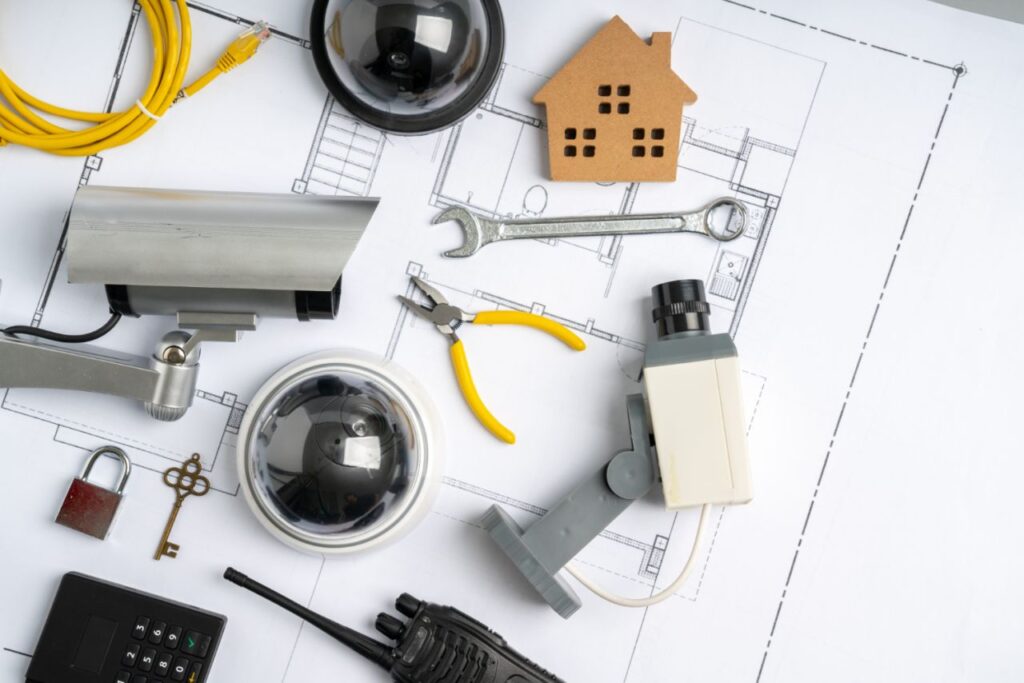
Cameras In Home Surveillance Systems
When only closed-circuit TVs hooked up to VCRs were available, the cost of installing security cameras in every home was too high for most people to consider. Although, prices have dropped considerably over the last few decades as storage and video technologies have improved dramatically. Security cameras are an essential component of any modern security setup, and they have recently dropped in price.
Not only can cameras deter criminals, but they can also provide valuable evidence in the event of a break-in by capturing an image of the suspect. Let's pretend you have access to a remote-viewable live-streaming camera. If so, this can also give you a constant view of your home, letting you monitor activity whenever you like and giving you a greater feeling of control over your property's safety.
Consider installing a cloud-connected device with night vision that allows live viewing via an app, whether you're going with a doorbell camera like Ring or a more traditional security camera. If you want to catch the criminals who commit crimes on your property, the camera you instal must have a resolution high enough to do so. A cloud service is helpful in case a burglar destroys or steals your camera, but an SD card can help ensure that you still have a recording of events even if your internet goes down.
Think carefully about where you want to put the gadget. Ideally, you want to put the camera where you can clearly see the intruder's face. Installing a camera in a visible location may deter criminals, but it may also tip them off that they are being recorded, in which case they may try to disable it, steal it, or hide their identities. The footage from a hidden camera is less likely to be destroyed in the event of a break in.
Most break-ins occur at the front door, so placing a camera there is wise. However, you may also want to place cameras inside your home, on the path to your front door, and/or near your fences. Be sure to strategically position cameras wherever you decide to instal them for optimal coverage. You could even think about getting a pan-and-tilt camera to cover as much ground as possible.
Security Cameras For Both Inside And Outside
Camera monitoring is a crucial part of any safety setup at home. They allow you to keep an eye on a particular area of your home and, thanks to technological advancements, you can watch the footage on your mobile device. Whether or not the camera is visible, whether it is wireless or hardwired, and how many things it can do, are all variables that depend on the needs of your system (or your own preferences).
Fire Alarms
Most modern homes have smoke detectors installed, and these are particularly important in the kitchen and bedrooms in the event of a fire. There is a wide range of smoke detectors available, from the simplest to those that provide audible warnings, so the choice is ultimately yours.
Movement Detection Devices
The light turning on when someone approaches your front door, or the sound of an alarm going off when a thief isn't supposed to be there, are both examples. All over your house, you'll find motion detectors to serve this purpose and sound an alarm if they detect any unwelcome activity. When motion is detected where it is not wanted, your security system responds by activating the appropriate mechanisms and sending a signal to your control panel. It's clear now that you have a burglar in your house. Door and window sensors, which detect whether a door or window has been opened as opposed to the motion itself, are not the same thing.
Detectors For Doors And Windows
The alarm won't go off until someone breaks the "circuit" between the sensors in the doors and windows. Doors and windows are typically equipped with sensors in addition to the openings themselves. When the door is closed, the sensors form a "closed circuit," but as soon as it is opened, the circuit is broken and an alarm sounds. What you've got here is pretty clever.
Security Systems For Doors And Windows
Every time a door or window is opened, a pair of magnetic switches inside detects the change in proximity between them and triggers an alarm. When triggered, most door and window alarms will sound a double beep to give you thirty seconds to disarm the system from the access control unit. It will sound an alarm if you don't comply.
This pause is necessary to reduce the likelihood of false alarms, which are annoying to neighbours and could reduce the system's effectiveness if they get used to them. You can avoid annoying false alarms by adding a one-minute delay to your alarm.
Due to the flexibility of window sensor placement, windows can be opened to varying degrees without compromising the security of the alarm system. You can even put in window screens that, if they are cut or removed from their mountings, will set off an alarm.
Although these security system parts are a bit dated, they are still a great investment for any home. One of the best things about them is that they can help apprehend the vast majority of intruders because almost all home invasions involve entry through a door or window on the first floor.
Approximately 34% of burglars gain entry through the front door, 23% use a window on the ground floor, and 22% use the back door, according to a single study. The study's findings informed these percentage breakdowns. This means that up to 79% of home intruders could be identified when used in conjunction with glass-break detectors, which can identify anyone attempting to enter the home through a window or glass door.
Decal Signs And Yard Posters
It may seem strange to include signs and stickers strategically placed around your home on this list, but they actually provide an extra (and largely unnoticed) layer of security. Indicators that you have a security system installed, such as signs and stickers that you place around the perimeter of your property, will discourage burglars from breaking in.
Sensors That Detect Broken Glass
Glass breaks at a distinct frequency, and alarms have been programmed to go off whenever such a sound is detected. Some sensors, however, can be mounted on the window itself to pick up on any vibrations caused by a broken pane. This is a great way to protect your home from intruders who might try to break in through a broken window or door. To help guide your decision, know that the typical detection range for glass-break sensors is 20 feet. This means you'll need to put one in every first-floor room with a pane of glass, which is pretty much all of them.
Those that are mounted on the glass itself will need to be installed on each and every pane that needs shielding. Glass-break sensors, window/door alarms, and motion detectors are an excellent choice if you can only instal a few parts of a security system. Together, they will provide a great deal of protection at a low cost.
Sirens
When a burglar triggers an alarm, a siren will sound to warn nearby residents and passers-by that there has been a break-in. The alarm's siren serves two purposes: to scare away intruders and to draw attention to the fact that a potential thief may be lurking nearby.
In addition to the main unit and the key FOB, you also get glass break detectors, panic pendants, carbon monoxide detectors, and an acellular backup unit. However, not all security systems include these. If you need assistance determining the best configuration for your security system, give us a call.
DIY guides may show you how to instal a home security system, but it's best to leave the installation to the experts. You can rest assured that the finished product will provide you and your loved ones with the highest level of protection available thanks to this thorough research.
Keypads
Keypads are standalone units that can be placed anywhere in your home to serve as a simple point of entry for your control panel. If you know your security code and press the corresponding buttons on your keypad, you can quickly set or reset your alarm.
Contacts for Doors and Windows
Doors and windows are just two of the places where devices called contacts can be installed. When a door or window is opened, the "contact" is severed, sending a signal to the panel, which in turn sends a signal to the monitoring station.
Movement Detectors
Intruder alarms, also known as motion detectors, are electronic devices that can be placed inside a home and set off whenever they detect motion. Passive infrared and microwave processing reduces the likelihood of false positives and boosts detection rates. In addition, "pet-sensitive" motion detectors can be installed in a home with pets.
Indicators Of A Broken Pane Of Glass
Installing glass break detectors, also known as audio detectors, is common practise in areas of a building with lots of fixed windows and easy access from the outside. The sound of shattering glass indicates an intrusion and will set off the alarm.
Detectors Of Smoke
Atronic Alarms suggests installing smoke detectors that sync up with the home's security system and broadcast an alert to the monitoring centre when triggered. The CMS then notifies the local fire station to send assistance to the building. Additionally, Medtronic Alarms offers a fire only programme for those who are only concerned with protecting their property from fire.
Most people picture something that would prevent break-ins when they consider home security systems, but fires and carbon monoxide poisoning are far more lethal threats. Therefore, it is in no way a bad idea to instal both smoke and carbon monoxide detectors as part of your home security system.
You can increase the likelihood that you will be notified of an emergency by installing a combination smoke and carbon monoxide detector as part of a home automation system, even though the vast majority of people already have such devices installed. While away from home, however, you can still contact the fire department in the event of an emergency and silence the false alarm when it is unwarranted.
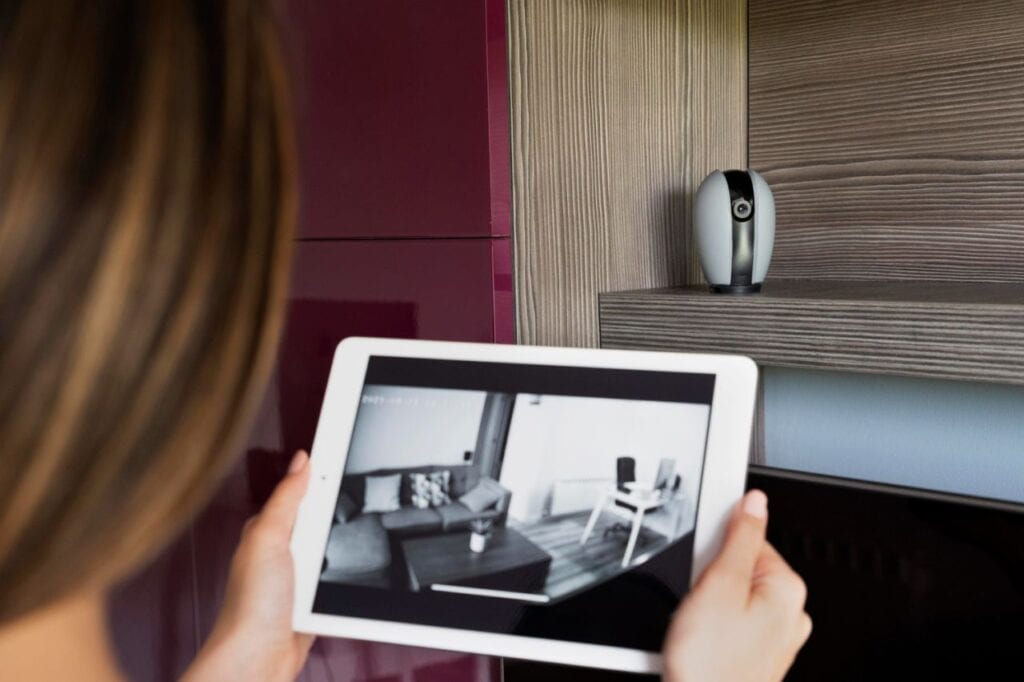
Heat Detectors
When a fire breaks out, the temperature in the immediate vicinity typically rises sharply. When the ambient temperature rises by 15 degrees or more per minute, or when it reaches 135 degrees, a heat detector will sound an alarm. The attic and the garage are ideal places to install heat sensors.
Investing in heat, temperature, and water leak sensors can further fortify your home against the effects of natural disasters beyond what a standard smoke and carbon monoxide detector can provide. A heat sensor will sound an alarm if it detects a rapid increase in temperature of more than 15 degrees Fahrenheit per minute, or if the ambient temperature rises above 135 degrees. These heat detectors are a useful complement to standard smoke alarms.
Temperature sensors provide a more nuanced warning system than simple heat detectors by alerting you when environmental temperatures exceed or fall below predetermined thresholds. Use them to keep your wine cellar or freezer at the perfect temperature all the time, even when you're not there, or to prevent your pipes from freezing while you're away.
Alarms For Carbon Monoxide
Installing a carbon monoxide alarm as part of your home security system is a great way to ensure your safety at all times. You can rest easy knowing that the authorities will be alerted to any potentially dangerous situations in your home thanks to the central monitoring station.
Radiation Detectors (Or Water Bug)
The water detector, an accessory to the alarm panel, is stationed in low-lying areas where flooding is a common hazard. The Waterbug will trigger an alarm if water is able to bridge the gap between the device's two contacts.
Detectors Of Temperature
Sensors that measure heat or cold can give a reliable account of the current conditions in their immediate vicinity. Whenever the temperature rises above the predetermined threshold, the device will alert the central station. You can instal these sensors anywhere temperature regulation is needed, making them perfect for wine cellars and freezers. Vacation homes and other buildings can benefit from their use because they reduce the risk of frozen pipes.
Motion Sensors In A Security System
With a motion detector, you can keep an eye on your property even when you can't physically be there, like when you're sleeping. These gadgets are motion sensors, and they will sound an alarm if they detect any movement inside the house. Everything you need to know about this product is right there in the name. However, you shouldn't rely solely on motion detectors for safety, as they are easily fooled and don't always cover the entire room. Instead of using locks on your doors and windows, it's best to use other security measures.
An individual who has a pet might rule out installing a motion sensor system. However, many units feature a pet-immune mode that deactivates upon sensing an animal below a certain weight or size threshold, while remaining on alert for a full-grown human occupant.
Every type of motion sensor employs a different technology, and some employ multiple technologies at once to increase their effectiveness while decreasing the likelihood of false alarms. For instance, passive infrared sensors, which detect human presence via heat signatures, are widely used in motion detectors.
On the other hand, they will go off if infrared energy levels fluctuate too quickly and dramatically. In order to prevent damage, these electronics must be placed far from any sources of excessive heat, such as windows that get direct sunlight, chimneys, ovens, or heating vents. Due to their sensitivity to heat, these tools will be less effective in their intended function if placed near rapidly heating materials.
The most common type of motion sensor currently in use is a microwave sensor. These detect motion when the microwave rays are obstructed in any way and operate by reflecting off nearby objects. Area-reflective sensors and ultrasonic sensors both perform in a similar fashion, though they use infrared and ultrasonic waves instead of microwave rays.
Decal Signs And Yard Posters
According to anecdotal evidence, having a sign or sticker advertising an alarm system in the yard or on a window may discourage burglars from targeting a specific home. Even if there is no hard data to back this up, common sense suggests that a home without a security system is more likely to be broken into than one with one.
Some disadvantages exist, the most notable being that many landowners find these signs and stickers unsightly. Additionally, burglars may incorrectly assume that a home with a security system is more likely to contain expensive, high-quality valuables than a home without one. A thief may be willing to risk breaking into a house without a home security system if he or she sees that many other people in the neighbourhood have put up similar signs or stickers in an effort to deter break-ins.
Conclusion
Numerous factors all need to be in place and functioning properly in order to ensure the safety of a home and its inhabitants. Every component is essential and must work properly to ensure adequate safety. When deciding on a Melbourne CCTV system for home protection, refer to this list of highly rated but reasonably priced options. A home security system wouldn't be complete without a control panel. It's where you'll go to activate or deactivate the alarm system.
Apps for modern home security systems allow for convenient remote monitoring. Similar to the brain, this part serves as a metaphor. When someone rings your doorbell and you're not there to answer, you can still see and talk to them thanks to your doorbell camera. Possible criminal deterrence from a camera placed in a highly visible area. If a break-in occurs, the footage from a hidden camera is less likely to be damaged.
The front door is where most break-ins occur, so installing a camera there is smart. It's also a good idea to instal cameras inside your house, near your front door, and any perimeter fences you have. You can view the footage on your mobile device whether or not the camera is in plain sight. Intruders can set off an alarm by opening a door or window, as this causes a change in proximity between two magnetic switches inside the building. Those trying to break in through a glass door or window will be immediately spotted by glass-break detectors.
Sticker Signs and Yard Message Posters add reassurance. If you only have room to instal a few components of a security system, glass-break sensors, window/door alarms, and motion detectors are all great options. In addition to the central monitoring station and the key FOB, you will also receive glass break detectors, panic pendants, and carbon monoxide detectors. An intruder alarm is a motion-detecting electronic device that can be installed inside a dwelling. Numerous windows necessitate the installation of glass break detectors, also known as audio detectors.
A smoke alarm that also detects carbon monoxide is an excellent safety measure to take. Temperature and humidity sensors can provide accurate information about the local environment. Take advantage of them to maintain the ideal temperature in your wine cellar or freezer even when you're not there. They can also notify you when the temperature outside reaches or drops below a certain level. There is a wide variety of motion sensors, each using its own unique technology or even several different technologies all at once.
Most motion detectors use passive infrared sensors, which can identify human bodies by their thermal signatures. These monitors need to be far from anything that could cause them to overheat, like a sunny window.
Content Summary
- A home security system has many components, such as a sensor, alarm panels, and keypads. This post will help you find the best home security system for your needs by explaining what goes into making one.
- No matter the brand or model, the idea behind a home security system is the same. The basic principle remains the same regardless of the size of your home, but the number of security components that need to be installed all around your home will vary.
- Check with the manufacturer of your security system to make sure you have all the necessary parts.
- If this is your first time purchasing a home security system, you should take your time and educate yourself as much as possible on the subject.
- The following paragraphs will break down the major parts of a home security system and explain what they do.
- Most people with an integrated home alarm system will have a master control panel of some sort, while those who buy their system's components separately may not have a centralised method to control all of the components at once (unless the components are smart home products that are linked on a central app).
- Customers who pay for a monitoring service typically have their main panel hardwired into the facility's infrastructure. You should look for a home security system that has a control panel with a battery backup if you are in the market for one.
- Most commonly, the front door is where one of the access control units is installed for ease of use. There are some newer systems that use sophisticated digital control units with automated home automation features.
- Plus, you can use your smartphone to keep an eye on your home security system thanks to the apps included in most new systems. When someone rings your doorbell and you're not there to answer, you can still see and talk to them thanks to your doorbell camera.
- This makes them particularly useful in perilous circumstances. The price of security cameras has dropped recently, making them more affordable than ever before and a crucial part of any modern security system. Cameras not only deter criminals but also provide crucial evidence in the event of a break-in by capturing an image of the suspect.
- Whether you choose a cloud-connected doorbell camera like Ring or a more traditional security camera, you should think about installing a device with night vision that allows live viewing via an app.
- If your camera is ever stolen or damaged, having your footage stored in the cloud is a great idea, but if you lose internet access, having the footage stored on an SD card is a good backup plan.
- Before deciding where to put the device, give it some serious thought. It's best to position the camera so that it can capture a good image of the intruder's face. If a break-in occurs, the footage from a hidden camera is less likely to be damaged.
- The front door is where most break-ins occur, so installing a camera there is smart. In any case, you could also instal cameras inside your house, on the way to your front door, and/or close to your fences.
- Intruders can set off an alarm by opening a door or window, as this causes a change in proximity between two magnetic switches inside the building.
- Most door and window alarms have a 30-second delay built into them after being triggered, signalling by a double beep.
- If you don't comply, it will make a noise. Putting a one-minute delay on your alarm is a simple way to prevent those annoying false alarms.
- When placed strategically, window sensors allow for a wide range of window opening angles before activating the alarm.
- These components for home security systems may be a little out of date, but they are still a worthwhile purchase.
- The fact that almost all home invasions happen through a door or window on the first floor means they can be very useful in apprehending the vast majority of intruders.
- According to one study, 34 percent of burglars enter through the front door, 23 percent use a ground-floor window, and 22 percent use the back door.
- When combined with glass-break detectors, which can identify anyone trying to enter the home through a window or glass door, this could mean catching up to 79% of home intruders.
- Signs and stickers indicating the presence of a security system can be placed strategically around the property's perimeter to deter would-be intruders.
- Glass-break sensors typically have a detection range of 20 feet, so keep that in mind as you make your choice.
- If you only have room to instal a few components of a security system, glass-break sensors, window/door alarms, and motion detectors are all great options.
- An acellular backup unit is included, as well as glass break detectors, panic pendants, carbon monoxide detectors, and a key FOB.
- Give us a ring if you're having trouble setting up your security system. While there are do-it-yourself (DIY) guides out there, we recommend having a professional handle the installation of your home security system.
- Even though most people already have smoke and carbon monoxide detectors installed, installing one as part of a home automation system can increase the likelihood that you will be alerted to an emergency.
- However, you can still contact the fire department and silence the false alarm if you are away from home and an emergency occurs.
- In addition to the protection provided by smoke and carbon monoxide detectors, you can further fortify your home against the effects of natural disasters by investing in heat, temperature, and water leak sensors.
- Unlike traditional heat detectors, which only sound an alarm when temperatures rise above a certain point, temperature sensors can also warn you when temperatures drop below those points.
- Use them to avoid frozen pipes while you're away by maintaining a constant temperature in your wine cellar or freezer.
- The device will send a signal to the control centre if the temperature rises above a certain limit. If you want to keep an eye on your property even when you can't be there, like when you're sleeping, a motion detector is the way to go.
- These devices are motion sensors that will trigger an alarm whenever they detect motion in the home. It is recommended that you use additional security measures in addition to the standard door and window locks.
- In order to detect motion, different types of sensors use various technologies, and some use multiple technologies in tandem to increase their effectiveness and decrease the number of false alarms they generate.
- For instance, motion detectors frequently employ passive infrared sensors because of their ability to identify human bodies by their thermal signatures. At this time, microwave sensors are the most widely used type of motion detector.
- Anecdotal evidence suggests that burglars might be deterred by a sign or sticker advertising an alarm system prominently displayed in the yard or on a window.
- There may not be statistics to support this claim, but it stands to reason that a house without security measures is easier to break into than one with.
- Intruders may also wrongly assume that a home with a security system is more likely to contain high-value items because of the presence of a security system.
- If a thief sees that many other people in the area have put up similar signs or stickers in an effort to deter break-ins, he or she may decide that breaking into the house without a home security system is worth the risk.


